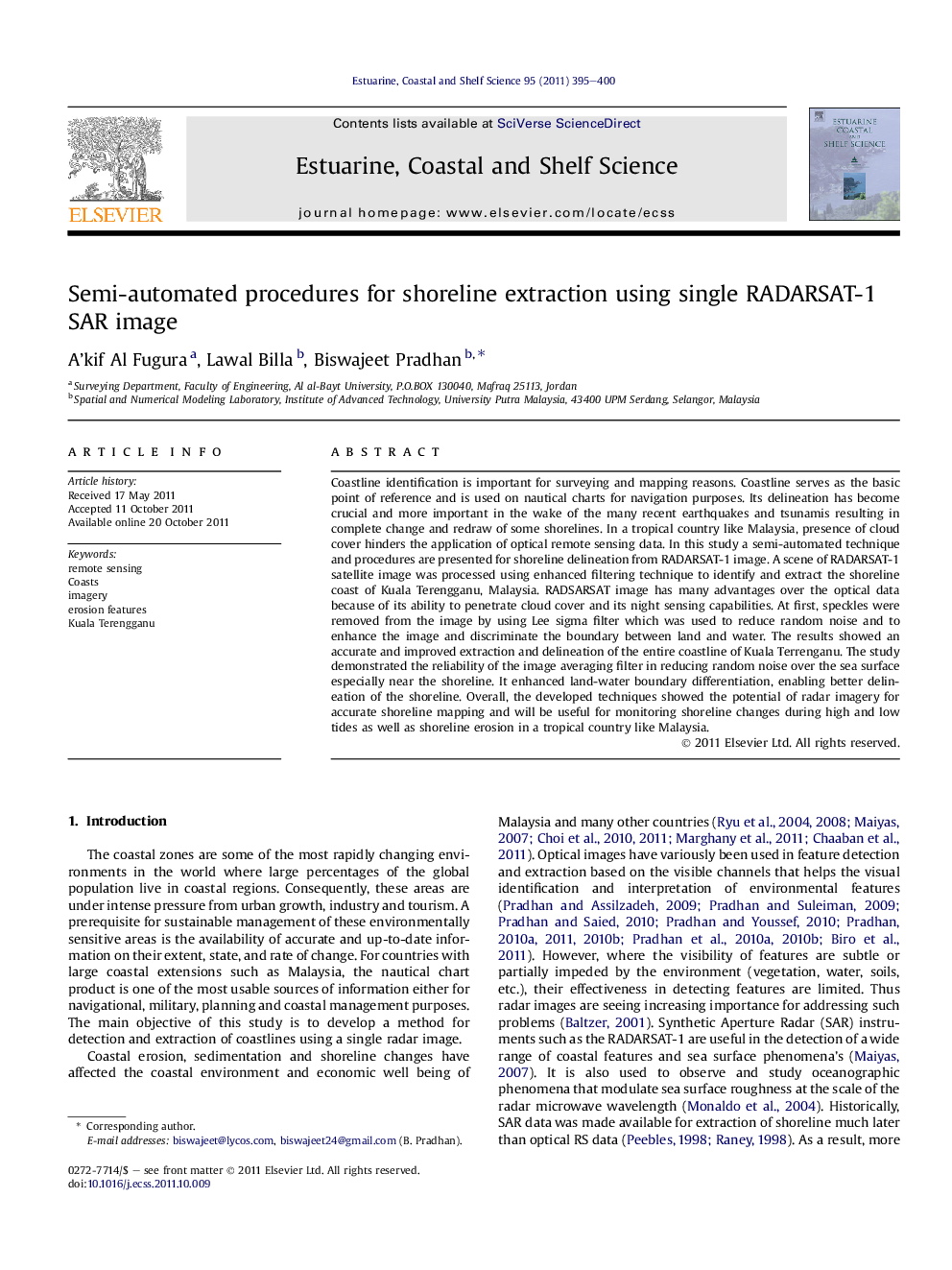| Article ID | Journal | Published Year | Pages | File Type |
|---|---|---|---|---|
| 4540344 | Estuarine, Coastal and Shelf Science | 2011 | 6 Pages |
Coastline identification is important for surveying and mapping reasons. Coastline serves as the basic point of reference and is used on nautical charts for navigation purposes. Its delineation has become crucial and more important in the wake of the many recent earthquakes and tsunamis resulting in complete change and redraw of some shorelines. In a tropical country like Malaysia, presence of cloud cover hinders the application of optical remote sensing data. In this study a semi-automated technique and procedures are presented for shoreline delineation from RADARSAT-1 image. A scene of RADARSAT-1 satellite image was processed using enhanced filtering technique to identify and extract the shoreline coast of Kuala Terengganu, Malaysia. RADSARSAT image has many advantages over the optical data because of its ability to penetrate cloud cover and its night sensing capabilities. At first, speckles were removed from the image by using Lee sigma filter which was used to reduce random noise and to enhance the image and discriminate the boundary between land and water. The results showed an accurate and improved extraction and delineation of the entire coastline of Kuala Terrenganu. The study demonstrated the reliability of the image averaging filter in reducing random noise over the sea surface especially near the shoreline. It enhanced land-water boundary differentiation, enabling better delineation of the shoreline. Overall, the developed techniques showed the potential of radar imagery for accurate shoreline mapping and will be useful for monitoring shoreline changes during high and low tides as well as shoreline erosion in a tropical country like Malaysia.
